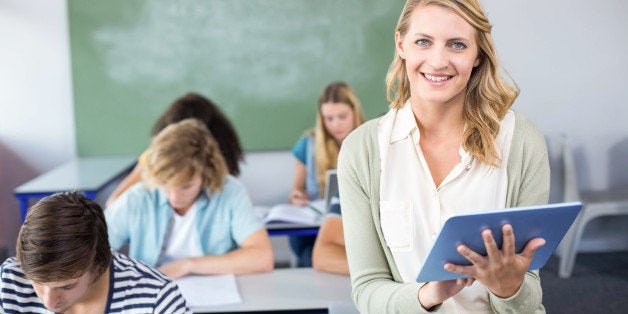
Empathy may be one of the most important social skills we learn as humans. Without it, not only do we fail to understand how our actions affect others, but we also lack the imagination and creativity needed to design tools and communicate our ideas beyond our own communities of like-minded people. Indeed, without some degree of empathy, we may not be able to communicate at all.
And yet, empathy also happens to be one of the most difficult skills to teach, rife as it is with complexity and emotion. The importance and challenges of teaching empathy have come into renewed focus, thanks in part to bestselling author Dr. Michele Borba's latest book, "UnSelfie: Why Empathetic Kids Succeed in Our All-About-Me World." Other recent events - ranging from the mass shooting in Orlando, to the firestorm caused by a letter from a rape victim read out loud to her attacker, to the growing global refugee crisis - all test our ability to imagine what it must be like to live in another person's shoes for a day.
In her book, Dr. Borba talks about the concept of "emotional literacy" as she takes readers through a 9-step process for engendering empathy in a world where what she calls the Selfie Syndrome is a growing epidemic among our youth. It so happens that this process aligns with many of the media literacy skills taught by organizations like The LAMP, which teaches youth to comprehend, create and challenge media messages through in-school and after-school programs. Here are 3 ways that teaching media literacy can also help teach empathy.
1. Perspective Taking: Decoding a media message often begins with the person or people who created the message to begin with. Why did they create the message, and what do they want you to do or feel as a result? The answer may seem straightforward to adults: The commercial was created by people who manufacture a product, and they want you to go out and buy the product. In teaching this concept to children, you are teaching that media are a construction, created by a specific author or authors for a specific purpose. At the same time, children are challenged to learn that different people have different desires and needs which may be very different from their own. The complexity of this lesson in empathy can shift according to the complexity of the message being decoded, but the fundamentals are the same whether the students in question are six or sixteen. In both cases, they have to consider what motivates another person.
2. Moral Identity: Processing a media message forces you to consider your ethical values and, by extension, your unique identity. In our programs we frequently experience this when we screen a news story or video clip that some students find offensive, while others struggle to see a problem. Take, for example, this Volkswagen commercial created for the 2013 Super Bowl.
When we showed this in a New York City high school class, just about half of the students laughed but the rest were incredulous, wondering how this ad stereotyping Jamaicans could have gotten made in the first place. One student said that if she had been in the room at Volkswagen, she never would have let something like this continue. Another student said he didn't see the issue; the ad was saying Jamaicans are happy, and isn't that a good thing? Our point as media literacy educators was not that one student was wrong or another was right; rather, our point was that different audiences interpret messages in different ways. The students didn't need to agree on the meaning, but we asked them to respect differing opinions and try to understand alternate perspectives.
3. Teamwork and Collaboration: Teaching media literacy is impossible - and also rather dull - without some kind of hands-on work. That's why making media is a huge part of what we do at The LAMP, and why so many forward-thinking educators are actively integrating media and technology production as part of their everyday teaching. But when students work together to remix a commercial or produce their own Public Service Announcement, they're doing more than clicking buttons. They're also negotiating ideas to create a team project, which means empathizing with other perspectives and making compromises for the good of the group and the task at hand, a practice Dr. Borba extols in chapter seven of her book. In order to be members of a functional group, young people have to think about other perspectives as well as how their own ideas are being received by other members of the group. Learning how to work with others is a vital part of any hands-on media literacy education.
Stay tuned for more news, and get plenty of resources for decoding media, by following us on Twitter at @thelampnyc or visiting us online at www.thelamp.org.
